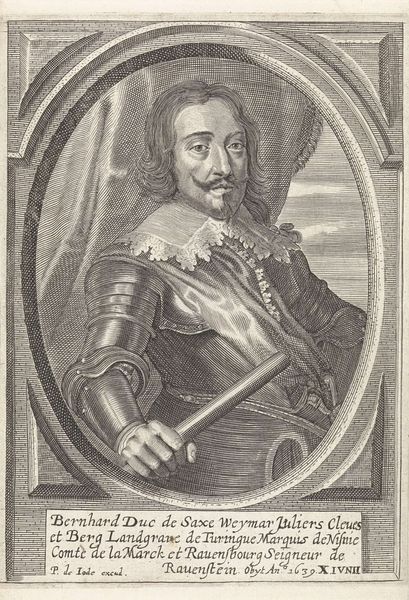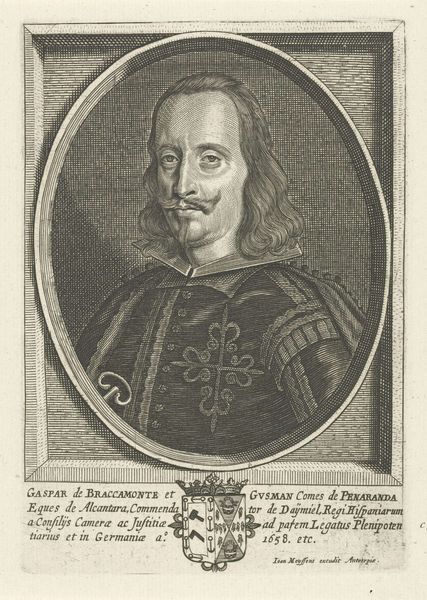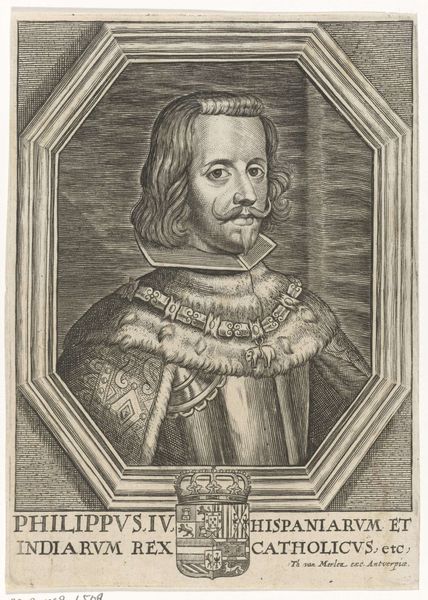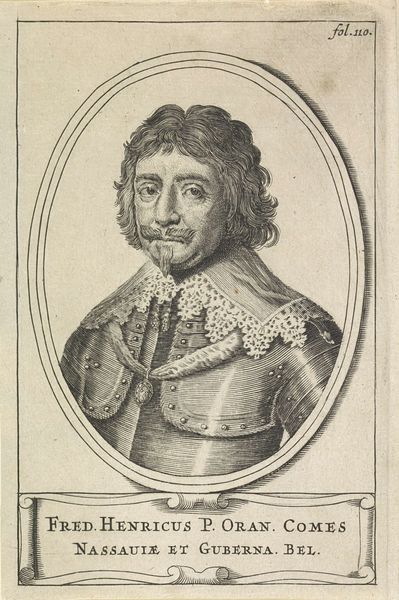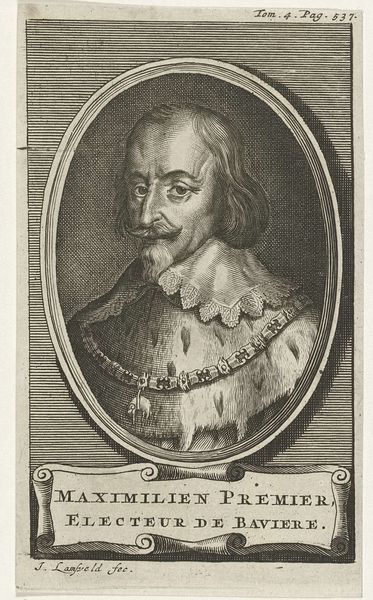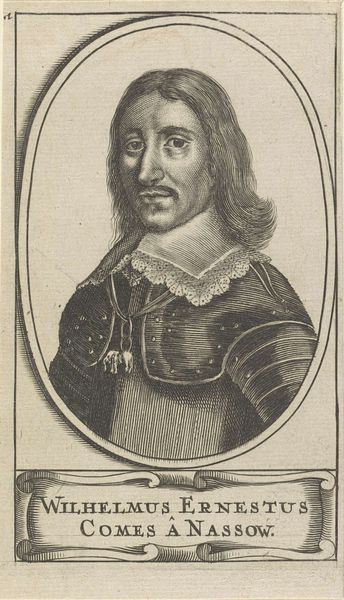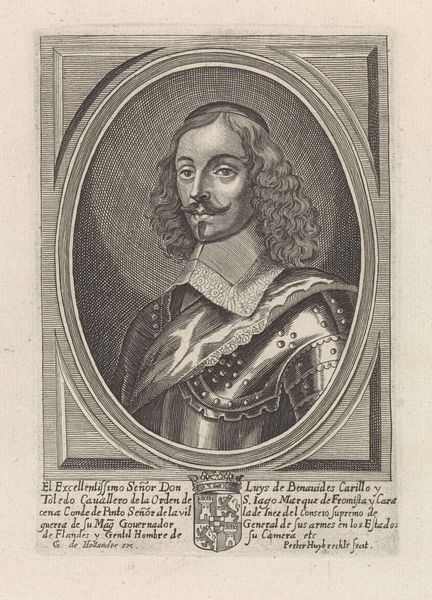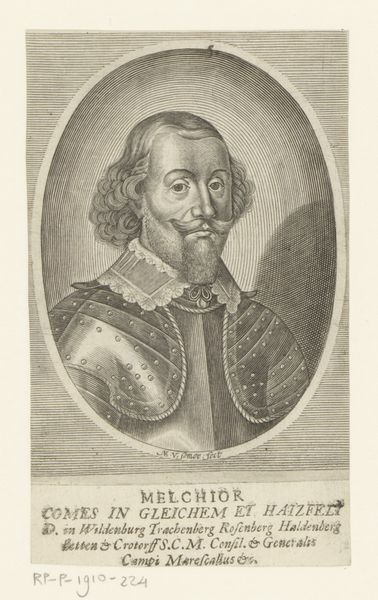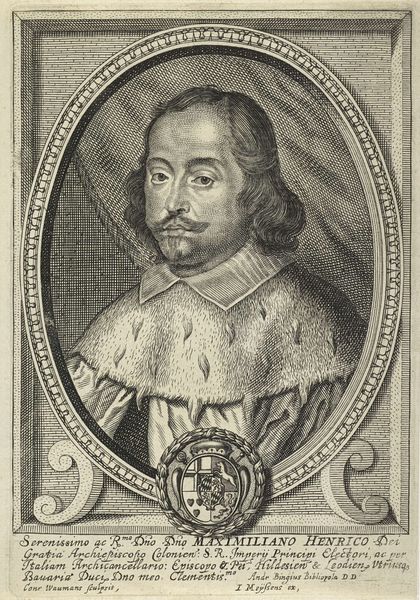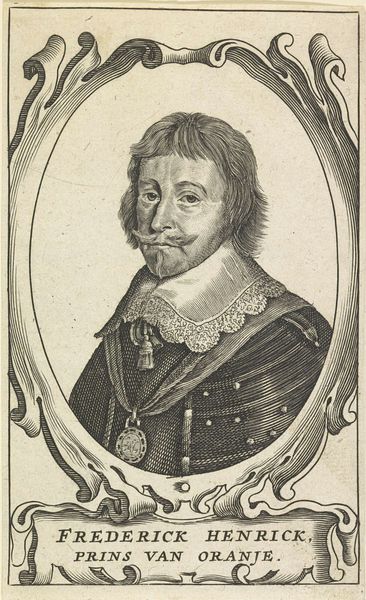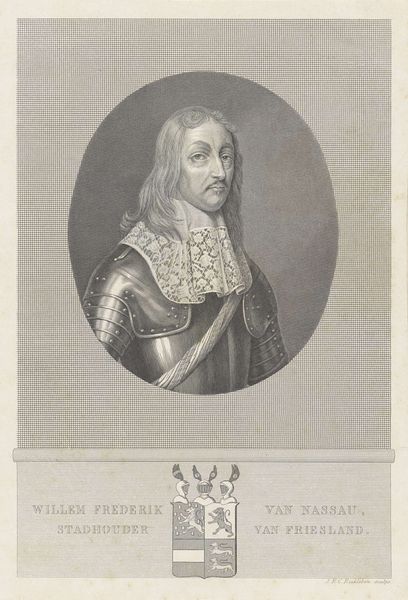
Portret van Leopold Willem van Oostenrijk, ten halven lijve 1628 - 1670
0:00
0:00
print, engraving
#
portrait
#
baroque
# print
#
figuration
#
line
#
history-painting
#
engraving
Dimensions: height 171 mm, width 124 mm
Copyright: Rijks Museum: Open Domain
Editor: This is a portrait of Leopold Willem van Oostenrijk by Pieter de Jode II, made sometime between 1628 and 1670. It's an engraving, quite formal, with the subject in ornate robes and surrounded by symbolic imagery. I wonder about the context in which images like this were created and circulated. What do you see in this print? Curator: As a historian, I immediately consider the socio-political function of such a portrait. In the 17th century, these images, circulated as prints, served as propaganda. They visually reinforced the power and legitimacy of the ruling class, literally distributing their image and implied authority throughout the land and beyond. How do you think the artist conveyed that power through visual elements? Editor: I guess the elaborate clothing and the inclusion of a crown in the background emphasize his status. And maybe the strong, direct gaze? Was this meant to inspire loyalty, or maybe even fear? Curator: Exactly! It's not just about representation; it's about the active construction of an image intended to project a very specific message. Think about the patronage system too. Jode was likely commissioned to produce this, making him an active participant in propagating this message. Did prints like this have any kind of 'spin' or political angle at that time, like images or advertisements today? Editor: That's fascinating to think about. I had focused more on the aesthetic aspects of the engraving itself. Now I’m thinking about how this was received and used. The function and intention really shape how I see it now. Curator: Indeed. By considering its original context and circulation, the portrait transcends a simple likeness, and becomes a vital piece of socio-political history.
Comments
No comments
Be the first to comment and join the conversation on the ultimate creative platform.
